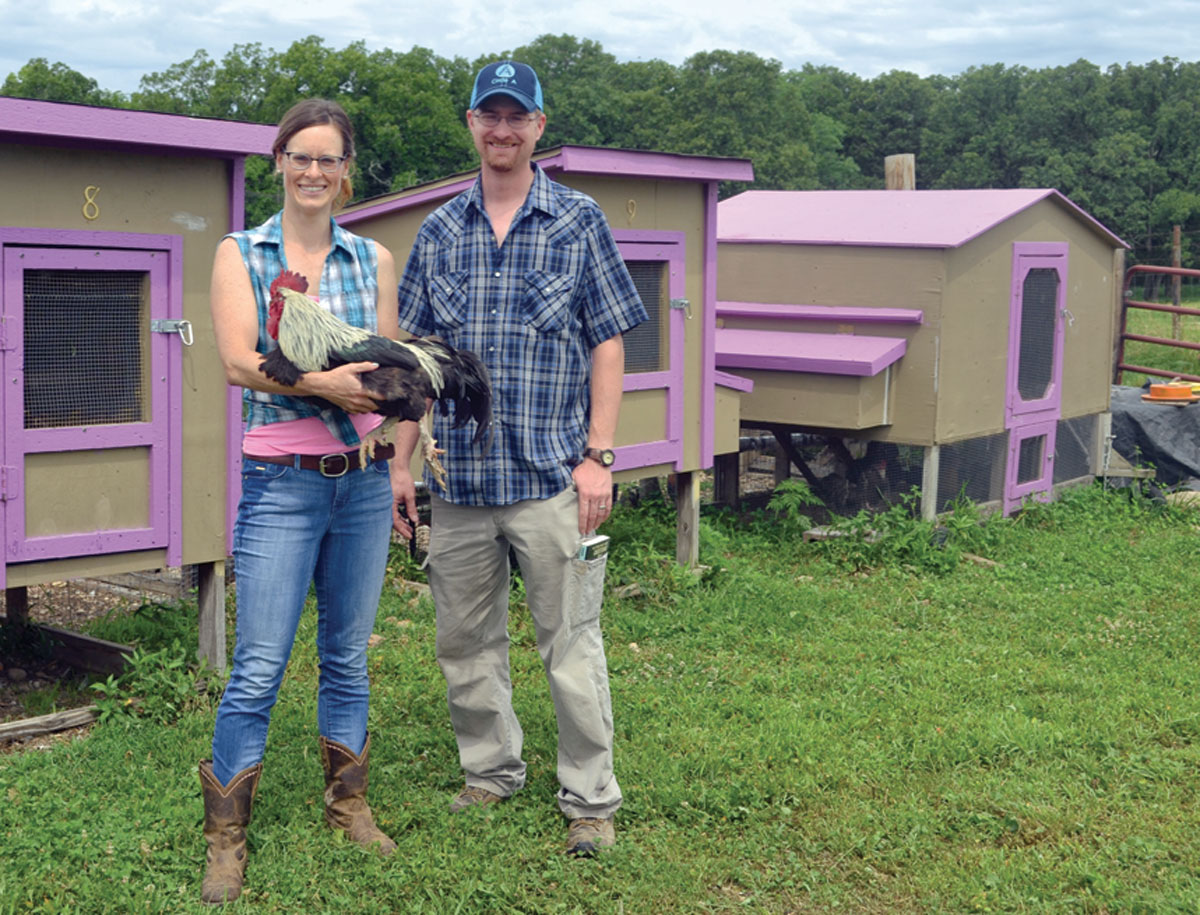
Austin and Kylie Craven have found a common interest in the cattle business
Austin and Kylie Craven raise Red Angus on their farm near Marshfield, Mo., in Webster County. They own 100 acres, which they purchased from Kylie’s dad, Cliff Hartman. It is part of Cliff Hartman Farms, and called C and C Cattle.
“We own 100 acres and we run spring (calving) cows. And then our fall cows, we do a rental agreement with her parents. We split calves with fall cows,” Austin explained.
Kylie said they have had Red Angus for probably two years.
Austin and Kylie come from different farming backgrounds. “My family has had cows since I was born; just small, 120 acres, and 30 momma cows; nothing too big,” Austin said. “Just enough to keep you busy.”
Kylie said her family has only had cattle six or seven years. “We’ve always done the horses, so this is pretty new for my family,” she said.
Red Angus are something different for both.
“I grew up with black (cattle),” Austin said. “My grandpa and dad had black cattle.”
He gave two reasons for choosing this breed.
“Honestly, the main reason is because I think the market is heading toward Red Angus and I’d like to be ahead of it somewhat,” Austin said. “Also, they seem to do really good in our climate. Black gets hotter in the sun. I don’t know if that’s been scientifically proven, but it seems that way. Seems like red cows stay out with their head in the grass and black cows stay in ponds.”
As far as the color affecting the price, Kylie said she thinks it’s just popularity; what’s in style.
“With replacements, I think we’re doing a little bit better in price. With steers and stockers I think we see just a little bit of a hit, not much,” Austin said. “As far as private treaty and replacement heifers, I think we’ve got a little bit of a premium.
“We have 84 full-time mommas and we keep about 15 to 20 replacement heifers in the background.”
They have a commercial cow/calf operation and raise Red Angus replacement heifers for sale.
“On our fall cows, we do a partner program with her dad and so on the fall cows, the majority of the replacement heifers from the fall herd will be his, but we have some too that we do Red Angus/ Charolais cross,” Austin said. “So we do Mellow Yellow replacement heifers.”
Describing what he looks for in a cow, Austin said he likes a female with good maternal traits.
“I want something that’s going to raise good babies.”
As for bulls, he said it’s all about structure, size and growth.
“I like a good, strong bull. He can go breed 25 to 30 cows and then be thrown in a pasture full of heifers too. I like good, low birth weight bulls, but I like bulls that are going to have some growth too. I’d like to see docility, but they’re all horse people so it doesn’t matter how ranchy/wild they are. We have good bulls. You want a docile bull, but I want a bull that will work.”
Some of their cows came from North Dakota and South Dakota.
“They have really, really good genetics out West,” Austins aid. “All bulls are local.”
Austin said the greatest assets of Red Angus is “they’re hard workers and good moms.”
“They’re easy to deal with,” Kylie added.
Austin and Kylie have different ways of “dealing with” cattle.
“Her mother and I have Gators, and I was a total Gator guy until I saw them work cattle on horseback. There’s no comparison,” Austin said.
While he sees the benefit of using horses, Austin doesn’t ride
“I don’t think there will ever be a comparison for me when it comes to horses and cattle. My whole life has been horses,” Kylie explained. “I definitely enjoy being able to ride horses and work cows off horseback. But there was an adjustment period and they are definitely totally different. The horses are good around the cattle. Some of them are young and a little green in the sense that they’re not comfortable around cows. That does help our show horses that need to mature a little bit. Then we have some horses that you can just jump on and take out there and they know exactly what to do, when to go and when to hold back. I feel like there’s an unspoken kind of eye between a cow and a horse. There’s very few times I’ve had a cow that will come at a horse. I feel like you have a little bit more control, because cows do tend to cut and horses can cut those cows just as quick. You can’t turn a wheel as fast as you can turn a horse.”
On raising cattle, Kylie said, “It’s a lifestyle. If you’re going to do it, there’s really no turning back.”






